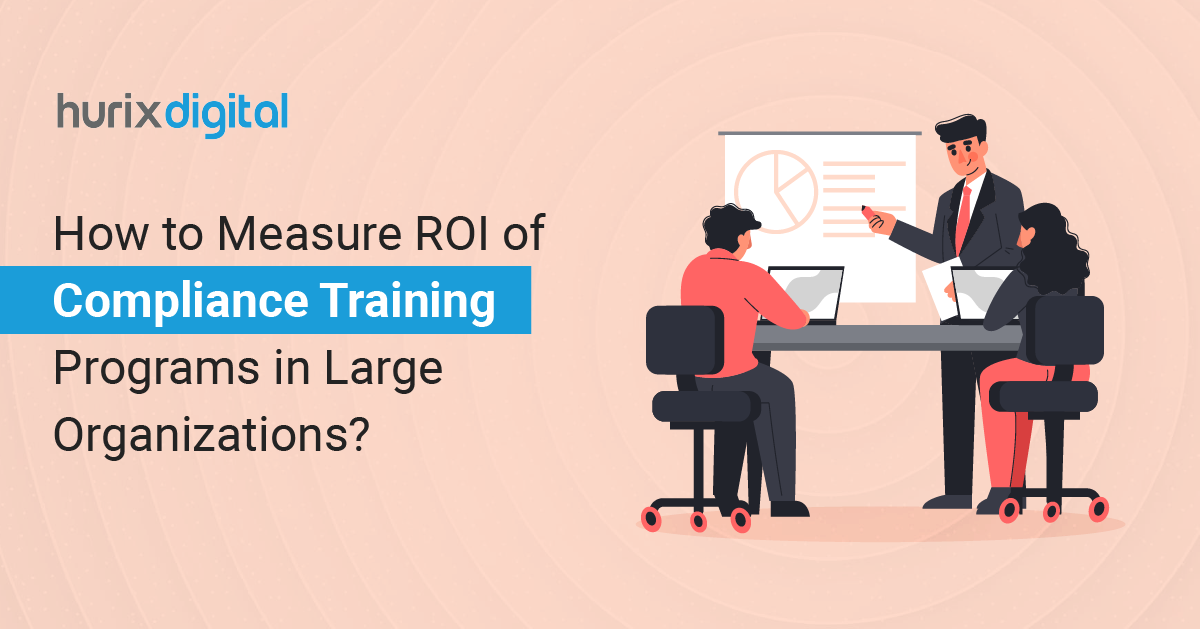
7 Ways MNCs Can Overcome Global Compliance Training Challenges
In today’s interconnected global economy, multinational corporations must navigate a complex landscape of regulations and compliance requirements. These diverse rules can vary widely across regions, presenting significant challenges for maintaining consistent adherence and ethical business practices.
A well-designed compliance training program is crucial for addressing these challenges. This guide offers in-depth strategies for creating and implementing effective training programs tailored to diverse regulatory environments.
Read on to learn how to build a framework that ensures compliance and promotes a culture of integrity and responsibility throughout your global operations.
Table of Contents:
- Challenges Multinational Corporations Face in Compliance Training
- Best Practices to Overcome Compliance Training Challenges
- Wrapping Up
Challenges Multinational Corporations Face in Compliance Training
Multinational corporations need help with compliance training. Ensuring that employees in different regions understand local laws and global standards poses a significant challenge. Language barriers and cultural differences further complicate the effective delivery of training programs.
Integrating compliance training seamlessly into daily operations is vital, requiring a careful balance between thorough training and productivity. This delicate balance demands creative solutions to meet the diverse needs of a widely dispersed workforce.
Also, staying updated on changing regulations requires frequent revisions to training materials, consuming time and money. Communicating these updates accurately across a global workforce is another daunting task.
Also Read: How Smart eLearning Solutions Boost Your Compliance Training in the Finance Sector
Best Practices to Overcome Compliance Training Challenges
Here are some best practices for overcoming compliance training challenges:
1. Tailored Training Materials
Tailored training materials are important for multinational corporations to follow different rules in various regions. These materials should be adjusted to match local laws, cultural differences, and industry needs.
Customizing the content helps employees understand and use the training in their jobs. It also shows respect for regional variations, encouraging better participation and adherence to rules.
To do this, companies should work with local professionals and regularly update their materials to stay current with laws and practices. By using customized training, businesses can connect global standards with local rules, creating a consistent and compliant system for all their international locations.
2. Assistance in Multiple Languages
It is important to offer training in different languages for compliance. Many companies have workers who speak different languages. Providing training in employees’ native languages helps them understand the material better. This can reduce mistakes and improve compliance.
Using professional translators and culturally aware trainers can make training more effective. Visual aids and interactive elements can also help with understanding.
Companies should prioritize offering training in multiple languages to create an inclusive learning environment. This can help all employees, no matter their language skills, benefit from the training and improve compliance.
3. Frequent Updates and Ongoing Education
Regular updates and ongoing education are important for effective compliance training. Laws and regulations change often, so companies need to update their training materials regularly. This helps prevent outdated information from causing problems, and ongoing education helps employees stay informed and aware of compliance requirements.
Being constantly updated and educated is the optimal way for multinational corporations to ensure that their employees have the latest knowledge of compliance. Continuous learning methods like refresher courses and digital updates keep compliance a priority. It’s a fantastic method of reducing risks and also promoting a culture of compliance in the organization.
4. Active and Interesting Training Techniques
Using fun and engaging training methods can make compliance programs more effective. Traditional lectures often don’t keep employees interested, so it’s important to try interactive techniques like games, simulations, and scenario-based learning. These methods help make training more enjoyable and memorable so employees can better understand and use compliance rules in real life.
Games can create competition to motivate participants, while simulations let them practice dealing with compliance issues in a safe setting. Adding videos and graphics can also help cater to different learning styles. Making compliance training fun and engaging can increase participation, improve memory, and boost compliance rates worldwide.
5. Consistent Evaluations and Feedback
Consistent evaluations and feedback are important for improving compliance training programs. Quizzes, surveys, and exercises help measure training effectiveness and identify areas needing more support.
Feedback from participants gives insights into their learning experiences and perceptions of the material. This information can refine and enhance the content to make it more relevant and engaging.
A feedback loop encourages open communication and allows employees to share concerns or suggestions. Prioritizing evaluations and feedback ensures training programs meet the changing needs of the workforce.
6. Open Lines of Communication
Open communication is important for effective compliance training and overall compliance within an organization. Employees should be able to ask for help, report problems, and give feedback without being afraid of negative consequences. This kind of honesty helps create a culture of trust and responsibility, where everyone is responsible for compliance.
On this note, directors of compliance training need to evaluate the effectiveness of communication channels and feedback mechanisms regularly. This involves assessing whether employees feel heard, understanding if their concerns are addressed promptly, and ensuring that communication strategies are updated to reflect the latest regulatory changes and company policies.
7. Involve Local Compliance Champions
Involving local compliance champions within various regions can greatly enhance the effectiveness of global compliance training programs. These individuals, who are well-versed in local regulations and cultural nuances, act as crucial intermediaries between the corporate compliance team and regional employees.
Additionally, local champions can provide valuable feedback on the training’s impact and suggest improvements based on regional experiences. By empowering these individuals, multinational corporations can bridge gaps between global standards and local practices, ensuring a more cohesive and effective compliance strategy.
Also Read: A CIO’s Guide to Ensuring Cloud Data Security and Compliance
Wrapping Up
Utilizing technology and interactive training methods helps engage employees, while local compliance champions and cross-functional teams offer on-the-ground support. And consistent evaluations, open communication, and incentivizing compliance further reinforce a culture of adherence.
At Hurix Digital, our skilled cloud experts use advanced technology to assist companies in upgrading their cloud applications and moving from outdated systems to cloud-based options.
We promise strong security in various cloud settings, adaptability, top-notch performance, and faster operations. Our services are designed to integrate seamlessly with emerging technologies like AI and ML, empowering your organization to stay ahead in the evolving digital landscape.
Contact us now to discover how we can help with your compliance training requirements and propel your business ahead!









